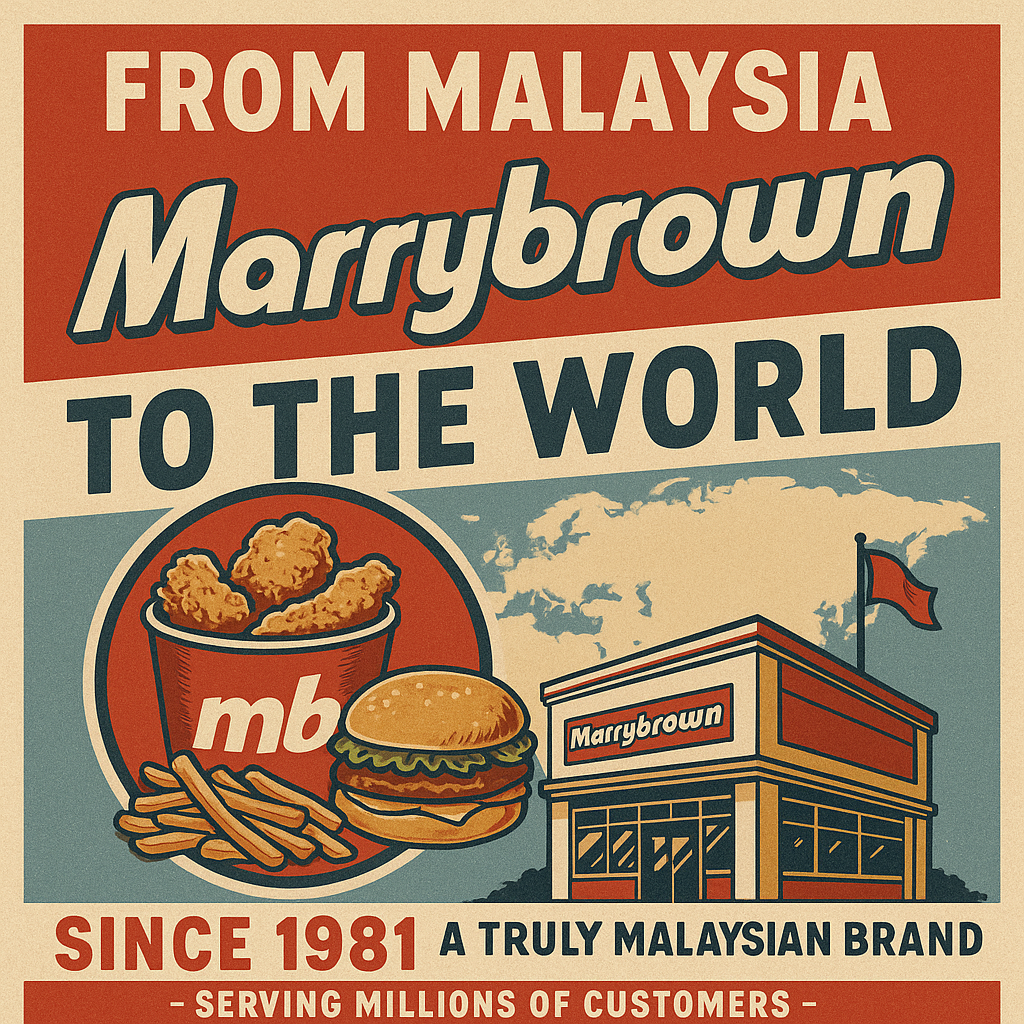-
Discover the World Safely with AIG Malaysia Travel Insurance
Travelling brings joy, excitement, and unforgettable memories, but it also comes with risks that can disrupt your plans. AIG Malaysia helps you explore confidently by providing protection that ensures peace of mind on every adventure.
AIG Malaysia’s travel insurance offers comprehensive coverage for every traveller. Whether you’re heading overseas for work, study, or leisure, AIG ensures that you and your loved ones are covered from departure to return.
From unexpected flight delays to lost luggage, AIG Malaysia’s efficient global support team is always ready to assist. With 24-hour service and a simple claims process, your journeys remain worry-free, no matter where life takes you.
Reliable insurance gives you confidence to embrace new experiences. AIG Malaysia’s travel plans include medical assistance, trip interruption benefits, and emergency evacuation coverage, so you’re never left unprotected abroad.
If illness or accidents happen during your trip, AIG Malaysia’s dedicated response team provides immediate help. Their experienced professionals handle emergencies swiftly, ensuring that you receive care and guidance no matter your destination.
Students and business travellers benefit from AIG’s tailored travel solutions. These plans provide essential healthcare support, travel inconvenience coverage, and financial protection that align with every traveller’s lifestyle and goals.
Families travelling together enjoy AIG Malaysia’s flexible family plans. Designed to balance affordability with safety, each policy provides protection for parents and children, keeping everyone covered through every part of the journey.
Through international travel insurance Malaysia, AIG Malaysia turns worry into confidence. Begin your next adventure with aig.my/personal and travel knowing you’re supported by global expertise and trusted protection.
-
Global Growth Starts Here: Emperikal, the Ecommerce Global Strategy Partner for Malaysian Brands
As Malaysian businesses expand beyond local borders, entering the ecommerce global space is no longer a luxury—it’s a necessity. The modern consumer is borderless, and brands must be digitally equipped to match that pace. Emperikal, Malaysia’s leading digital partner, helps businesses unlock cross-border success through data-led ecommerce strategies tailored for global reach.
1. Understanding the Global Ecommerce Mindset
Going global means thinking beyond currency and shipping—it’s about localised UX, region-specific product offerings, and scalable operations. Emperikal supports businesses in adapting to multiple markets without losing brand integrity.
2. Building Borderless Storefronts
A global ecommerce brand needs more than a website. Emperikal helps brands develop multi-language, mobile-optimised storefronts integrated with global payment gateways, logistic APIs, and CRM systems.
3. Marketing That Scales Internationally
Going global requires smart marketing across various channels—from Google Ads in Singapore to TikTok campaigns in the Philippines. Emperikal builds country-specific acquisition strategies while maintaining cohesive branding.
4. Marketplace Integration for Wider Reach
From Shopee SEA to Amazon US, Emperikal helps Malaysian brands get listed, optimised, and discovered across global marketplaces. Product listing SEO and review strategies are all part of the package.
5. Analytics to Fuel Global Growth
Ecommerce success is data-driven. Emperikal integrates cross-market analytics, tracks multi-channel conversions, and provides insights that drive smarter international decisions.
Conclusion
For Malaysian brands ready to break into the ecommerce global scene, having a strategic partner is key. Emperikal is that partner—combining technology, creativity, and local insight to fuel sustainable growth across borders. -
REAL Schools Johor Bahru: Excellence Begins at Private Schools in Johor Bahru
Education is the cornerstone of a bright future. At REAL Schools Johor Bahru, children are guided to discover their strengths, embrace challenges, and grow into confident, compassionate individuals prepared for the world ahead.
As one of the top private schools in Johor Bahru, REAL Schools offers a balanced education that combines global standards with local values. Students learn through meaningful experiences that encourage creativity and critical thinking.
Part of the XCL Education group, REAL Schools equips students with academic and life skills to help them thrive in an ever-changing world. Its goal is to nurture curiosity, resilience, and leadership through a holistic learning journey.
The Johor Bahru Campus offers a peaceful, green learning environment where nature and innovation meet. Modern classrooms, collaborative spaces, and creative studios make learning both engaging and inspiring.
Every student at REAL Schools experiences an education that extends beyond the classroom. Guided by passionate educators, they develop values such as teamwork, empathy, and responsibility — essential for lifelong success.
With more than 35 years of excellence, REAL Schools has educated over 25,000 students across Malaysia. Many have gone on to study at top universities like Cambridge and Oxford, a testament to its academic reputation.
At REAL Schools Johor Bahru, students are encouraged to explore their interests through arts, science, and sports — discovering their passions while developing confidence and leadership.
Families seeking private schools in Johor Bahru will find REAL Schools the perfect place for their child to learn, grow, and succeed in a supportive community.
To discover how REAL Schools Johor Bahru continues to shape tomorrow’s leaders, visit https://realschools.edu.my/.
-
Your Journey, Your Way — With Hertz Malaysia
Travelling across Malaysia should be as effortless as it is exciting. Whether you’re planning a city escape, a beach retreat, or a family holiday, Hertz Malaysia ensures every drive is smooth, reliable, and filled with comfort from beginning to end.
Simplify your travel plans with car rental, offering the perfect mix of freedom and flexibility. With Hertz Malaysia, you gain access to a trusted network of vehicles and services designed to meet your every mobility need.
From stylish sedans to family-sized SUVs, every vehicle in Hertz Malaysia’s fleet is regularly maintained and equipped for safety. Whatever your destination, you can count on a comfortable and dependable ride.
Families can travel with ease thanks to transparent pricing, flexible booking options, and add-ons like GPS and child seats. Hertz Malaysia makes sure every road trip feels as enjoyable as the destination itself.
Want to learn more about the travel model? The car rental concept highlights how renting a vehicle offers flexibility and convenience — values that Hertz Malaysia proudly brings to every customer experience.
From urban explorations to scenic countryside drives, Hertz Malaysia’s short- and long-term rental options make every journey convenient, affordable, and fully customisable.
Need something extra? Hertz Malaysia’s chauffeur-driven service is ideal for business professionals or families who prefer to sit back and relax while travelling in style and comfort.
For your next trip, choose car rental with Hertz Malaysia. Enjoy dependable vehicles, professional service, and unmatched freedom wherever you go.
At Hertz Malaysia, we take pride in offering a comprehensive range of mobility solutions designed to exceed your expectations. Whether you’re looking for the simplicity of short-term rentals, the security of leasing, or the luxury of chauffeur-driven services, our commitment to exemplary service never wavers. Discover unmatched comfort, adaptability, and style with Hertz Malaysia—where every journey is a celebration of streamlined mobility. Start your next journey today by booking your car at Hertz Malaysia.
-
HIIT vs Steady-State Cardio: Which One Burns More Fat?
When it comes to fat loss, two workout styles dominate the fitness world: High-Intensity Interval Training (HIIT) and steady-state cardio. Both are effective, but they work in very different ways. HIIT delivers short bursts of intense activity followed by rest, while steady-state cardio focuses on maintaining a consistent pace over a longer period. The big question is: which one burns more fat, and which is better for you? Let’s break it down.

What Is HIIT?
HIIT involves alternating between short, intense exercise periods and brief recovery times. For example, sprinting for 30 seconds, then walking for 1 minute, repeated several times.
Key Benefits of HIIT:
- Burns significant calories in a short time
- Boosts metabolism for hours after exercise (afterburn effect)
- Improves cardiovascular fitness and endurance
- Time-efficient — most sessions last 15–30 minutes
What Is Steady-State Cardio?
Steady-state cardio means exercising at a consistent pace, like jogging, cycling, or swimming for 30–60 minutes. The intensity is moderate, allowing you to sustain the effort without stopping.
Key Benefits of Steady-State Cardio:
- Easier to maintain for longer sessions
- Gentler on the body, reducing injury risk
- Builds aerobic endurance
- Great for stress relief and mental clarity
Which Burns More Fat: HIIT or Steady-State?
Both HIIT and steady-state cardio burn fat, but they do so differently.
- HIIT: Burns calories quickly and increases post-exercise calorie burn through the “afterburn effect” (excess post-exercise oxygen consumption, or EPOC). This means your body continues burning fat even after the workout ends.
- Steady-State Cardio: Burns calories steadily during the workout, but calorie burn stops once the exercise ends.
Studies suggest that HIIT may burn slightly more fat in less time, but steady-state cardio remains effective, especially for those who prefer longer, lower-intensity workouts.
Pros and Cons of HIIT
Pros:
- Time-efficient
- Builds strength and endurance simultaneously
- Keeps workouts exciting with variety
Cons:
- Can be too intense for beginners
- Higher risk of injury if form is poor
- Requires more recovery time between sessions
Pros and Cons of Steady-State Cardio
Pros:
- Accessible to all fitness levels
- Lower injury risk
- Easier to recover from, allowing frequent sessions
Cons:
- Time-consuming
- May cause plateaus if done without variation
- Burns fewer calories per minute than HIIT
Which Should You Choose?
The right choice depends on your lifestyle, fitness level, and goals.
- Choose HIIT if:
- You’re short on time
- You want maximum calorie burn in fewer minutes
- You’re comfortable with high-intensity workouts
- Choose Steady-State if:
- You prefer a gentler approach
- You enjoy longer workouts like jogging or cycling
- You want sustainable fat-burning with less strain
Combining HIIT and Steady-State
For best results, combine both in your routine. A balanced plan might include:
- 2 HIIT sessions per week for fat-burning and metabolic boost
- 2–3 steady-state sessions for endurance and recovery
- Strength training to preserve muscle and maximise fat loss
This combination ensures variety, prevents plateaus, and supports long-term progress.
Final Thoughts: The Winner Is… Both
When comparing HIIT vs steady-state cardio, neither is objectively better — the best workout is the one you enjoy and can stick with consistently. HIIT is fantastic for quick, intense fat-burning, while steady-state cardio provides endurance and sustainability.
Incorporating both ensures you get the best of both worlds — fast results from HIIT and steady, consistent benefits from longer cardio sessions.
So whether you’re sprinting through intervals or enjoying a calming jog, both paths lead to the same destination: a fitter, healthier you.
-
Classic Cars Making a Comeback in the Modern Age
The sight of a vintage car cruising down the road always turns heads. Whether it’s the curves of a Volkswagen Beetle, the muscle of a Ford Mustang, or the elegance of a Jaguar E-Type, classic cars hold a special place in automotive history. Surprisingly, these old-school machines are making a comeback in today’s modern age, attracting collectors, enthusiasts, and even younger generations. But why are classic cars experiencing renewed popularity in an era dominated by electric vehicles and cutting-edge technology?

The Nostalgia Factor
Classic cars tap into nostalgia — a longing for simpler times when driving felt like an adventure. For older generations, these cars bring back memories of youth. For younger enthusiasts, they offer a chance to connect with history and experience what driving was like before modern electronics took over. The emotional pull of a classic car is powerful, and that’s a key reason for its resurgence.
Restomods: Blending Old with New
One of the biggest trends fuelling the return of classic cars is the restomod movement. A restomod combines the timeless design of a vintage vehicle with modern upgrades such as:
- Fuel-efficient or electric engines
- Advanced braking systems
- Air conditioning and infotainment
- Improved suspension and safety features
This fusion of old and new allows drivers to enjoy the charm of a classic while benefiting from modern reliability and performance.
Investment Value of Classic Cars
Classic cars are increasingly seen as investments. Unlike most modern cars, which depreciate quickly, well-maintained classics often appreciate in value. Collectors view them as tangible assets that combine financial potential with personal enjoyment. Auctions worldwide are seeing record-breaking sales for iconic models, further boosting their appeal.
Social Media and Pop Culture Influence
The digital age has also played a role in reviving interest in vintage cars. Social media platforms showcase beautifully restored classics, while films and TV shows continue to feature them in iconic roles. Younger generations, influenced by these visuals, are increasingly drawn to the aesthetics of classic vehicles, making them “cool” again.
Sustainability and Electric Conversions
Surprisingly, sustainability is part of the comeback story. Instead of scrapping old cars, some enthusiasts are converting them into electric vehicles. EV conversions preserve the vintage look while making cars eco-friendly and compliant with future emission standards. This trend bridges the gap between nostalgia and sustainability, ensuring classic cars remain relevant in the modern world.
Community and Car Culture
Classic car ownership isn’t just about the vehicle; it’s about belonging to a community. Clubs, shows, and meetups bring together enthusiasts who share a passion for restoration and preservation. These events keep the culture alive and provide newcomers with the knowledge and support to maintain their vehicles.
Challenges of Owning a Classic Car
Of course, owning a vintage vehicle comes with challenges:
- Difficulty finding spare parts
- Higher maintenance costs
- Limited safety features compared to modern cars
- Insurance premiums that can be costly
Despite these hurdles, the emotional and cultural rewards often outweigh the practical drawbacks for enthusiasts.
The Future of Classic Cars
Classic cars are unlikely to replace modern vehicles, but they’ll continue to thrive as collectibles, investments, and cultural icons. Restomods and EV conversions ensure they adapt to the times, while younger generations keep the passion alive. In a future dominated by automation and electrification, classic cars will stand as symbols of individuality and history.
Final Thoughts: Old Meets New
The comeback of classic cars proves that automotive passion transcends technology. While the world moves toward electric vehicles and driverless systems, vintage cars remind us of the artistry, craftsmanship, and raw emotion that driving once represented.
Whether preserved in original form, upgraded as restomods, or converted to electric power, classic cars continue to inspire. They’re more than just vehicles — they’re rolling pieces of history that remind us where we’ve been, even as we race toward the future.
-
Street Food Stories: A Journey Through Southeast Asia’s Flavours
For many travellers, the best way to experience Southeast Asia is through its bustling street food stalls. More than just meals, street food represents history, culture, and community — a culinary language that speaks across borders. From smoky satay skewers in Malaysia to fragrant bowls of pho in Vietnam, every dish tells a story. Join us on a journey through Southeast Asia’s street food and discover why these dishes captivate locals and tourists alike.

The Cultural Role of Street Food
Street food in Southeast Asia is more than quick, affordable dining. It’s a reflection of tradition and everyday life. Many recipes have been passed down for generations, evolving alongside local communities. Street food stalls often double as gathering spots, where people from all walks of life share meals and conversations.
The vibrant atmosphere of hawker centres, night markets, and roadside stalls is as much a part of the dining experience as the food itself. For travellers, sampling these dishes offers a direct connection to the soul of each country.
Malaysia: Satay and Nasi Lemak on the Streets
Malaysia’s street food is a true melting pot of Malay, Chinese, and Indian influences. Satay, skewered meat grilled over charcoal and served with peanut sauce, is a national favourite. It’s smoky, savoury, and perfectly balanced with sweet-spicy dips.
Another iconic dish is nasi lemak, Malaysia’s unofficial national dish, often sold from roadside stalls wrapped in banana leaves. With coconut rice, sambal, anchovies, and boiled eggs, nasi lemak is comfort food at its finest — cheap, filling, and deeply rooted in Malaysian culture.
Thailand: Pad Thai and Mango Sticky Rice
No conversation about Southeast Asian street food is complete without Thailand. Pad Thai, a stir-fried noodle dish with shrimp, tofu, peanuts, and lime, is one of the most beloved street meals worldwide. Its balance of sweet, sour, and savoury reflects Thai cooking philosophy.
For dessert, mango sticky rice is a must-try. Fresh mangoes paired with sticky rice cooked in coconut milk create a dish that is both simple and indulgent. Night markets in Bangkok are filled with vendors serving this treat to eager crowds.
Vietnam: Pho and Banh Mi
Vietnamese street food is globally recognised for its fresh ingredients and fragrant flavours. Pho, a noodle soup with beef or chicken, is eaten at all times of the day, often from humble street stalls. The aromatic broth, simmered with spices like star anise and cinnamon, is the heart of the dish.
Meanwhile, banh mi reflects Vietnam’s French colonial influence. This baguette sandwich, filled with meats, pickled vegetables, and herbs, is a perfect example of cultural fusion and is one of the most portable and beloved street foods worldwide.
Indonesia: Satay, Bakso, and Gorengan
Indonesia’s vast archipelago offers a rich street food culture. Bakso, meatball soup, is a street food staple, often sold from pushcarts. It’s hearty, affordable, and loved across the nation.
Gorengan, or deep-fried snacks, are also popular. From fried tofu to tempeh and banana fritters, these crunchy bites are cheap, addictive, and perfect with a cup of sweet tea.
Of course, Indonesia also boasts its own style of satay, often spiced differently from the Malaysian version, showing how even shared dishes vary by country.
The Philippines: Isaw and Halo-Halo
The Philippines brings adventurous flavours to its street food scene. Isaw, grilled chicken or pork intestines, is marinated and charred to smoky perfection. While unusual to outsiders, it’s beloved locally for its bold flavours.
For something sweeter, halo-halo is a colourful dessert made with shaved ice, milk, jellies, fruits, and purple yam. Sold from roadside vendors, it’s refreshing in the tropical heat and a playful mix of textures and tastes.
Singapore: Hawker Culture at Its Finest
Singapore has elevated street food into a celebrated culinary culture, with hawker centres recognised by UNESCO. Dishes like Hainanese chicken rice, char kway teow, and laksa are world-famous. Each stall often specialises in one dish, perfecting it over decades.
What makes Singapore’s street food unique is its balance of affordability and quality — Michelin-starred meals can be enjoyed for just a few dollars. It’s proof that street food can rival fine dining in flavour and cultural value.
Why Street Food Connects Us
Street food isn’t just about taste; it’s about connection. It connects locals to their heritage, travellers to new cultures, and communities to each other. Each bite carries the stories of families, traditions, and regions. The accessibility of street food ensures that everyone — from students to executives — can share the same experience.
Tips for Enjoying Street Food Safely
For first-time travellers, eating street food can feel intimidating. Here are some tips:
- Choose stalls with long queues — locals know what’s good.
- Eat freshly cooked items instead of pre-prepared ones.
- Drink bottled or filtered water when trying new places.
- Be adventurous but start with familiar dishes if you’re cautious.
With these tips, you can dive into Southeast Asia’s street food confidently.
Final Thoughts: A Feast for the Senses
Southeast Asia’s street food is more than a culinary experience — it’s a journey through culture, tradition, and community. From Malaysia’s satay to Vietnam’s pho, each dish tells a unique story of heritage and creativity.
For busy locals, it’s a daily meal. For travellers, it’s a memory that lingers long after the trip ends. So the next time you find yourself in Southeast Asia, skip the fancy restaurants for a night and follow the aroma of sizzling woks, smoky grills, and bubbling soups — the true heart of the region’s flavours lies on the streets.
-
The Role of Recovery Days in Maximising Performance
In the pursuit of fitness goals, many people push themselves harder every day, believing more training equals faster results. But in reality, growth happens not during workouts, but during recovery. Rest days are essential for muscle repair, injury prevention, and overall performance. Skipping recovery doesn’t just slow progress — it can derail it entirely. Here’s why recovery days matter and how to use them effectively to maximise your fitness journey.

Why Recovery Is Essential
Exercise places stress on the body. When you lift weights, run, or perform high-intensity workouts, tiny tears form in your muscle fibres. Recovery allows these fibres to repair and grow stronger, leading to improved performance over time. Without adequate rest, your body stays in a state of breakdown, increasing the risk of overtraining and burnout.
Key Benefits of Recovery Days
1. Muscle Growth and Repair
Recovery is when muscle tissue rebuilds. Without rest, you limit your body’s ability to adapt, which stalls strength and size gains.
2. Injury Prevention
Overuse injuries like tendonitis, shin splints, and joint pain often stem from training too frequently without rest. Scheduled recovery days reduce this risk.
3. Improved Performance
Rested muscles perform better. Athletes who prioritise recovery often see faster times, heavier lifts, and better endurance.
4. Hormonal Balance
Chronic overtraining raises stress hormones like cortisol, which can disrupt sleep and metabolism. Recovery restores hormonal balance.
5. Mental Health Benefits
Recovery days prevent workout fatigue and keep motivation high. Mental burnout is as real as physical exhaustion.
Types of Recovery Days
Not all recovery means complete inactivity. There are two main approaches:
Active Recovery
Light movement that promotes blood circulation and flexibility. Examples:
- Walking
- Yoga or stretching
- Swimming at a relaxed pace
- Cycling on low resistance
Passive Recovery
Full rest with no structured physical activity. Ideal after intense sessions or when your body feels especially fatigued.
Both forms play a role in a balanced training plan.
How to Optimise Recovery
- Get Quality Sleep
Sleep is the cornerstone of recovery. Aim for 7–9 hours per night to support muscle repair and mental clarity. - Stay Hydrated
Water aids in nutrient delivery and toxin removal. Dehydration slows recovery and increases fatigue. - Fuel Your Body Right
Protein-rich meals rebuild muscles, while carbs replenish glycogen stores. Include healthy fats for hormone regulation. - Use Recovery Tools
Foam rollers, massage guns, and stretching routines help ease muscle tightness and improve circulation. - Listen to Your Body
If you feel unusually sore, fatigued, or unfocused, it may signal the need for extra rest.
Signs You Need More Recovery
- Persistent muscle soreness
- Decreased strength or performance
- Trouble sleeping
- Irritability or low motivation
- Frequent minor injuries or illnesses
These are red flags of overtraining, reminding you that rest is non-negotiable.
Balancing Training and Recovery
For most people, 2–3 rest days per week is ideal, depending on workout intensity. Elite athletes also incorporate structured recovery into their training cycles. A balanced routine might look like:
- 3–4 strength or cardio sessions
- 2 active recovery days
- 1 full rest day
This balance ensures consistent progress without risking burnout.
Final Thoughts: Rest Smarter, Perform Better
Recovery days are not a sign of weakness — they’re a strategy for long-term success. By allowing muscles to repair, preventing injuries, and restoring mental focus, rest days help you perform at your peak.
So instead of feeling guilty for skipping the gym, remember this: every strong athlete knows that rest is part of training. Embrace recovery, and you’ll unlock your true potential.
-
The Rise of Autonomous Vehicles: Are We Ready for Driverless Roads?
Self-driving cars were once a futuristic concept, but in 2025, autonomous vehicles (AVs) are closer than ever to becoming mainstream. From tech giants to automakers, companies worldwide are racing to develop reliable driverless systems. While the promise of safer, more efficient roads is exciting, the question remains: are we truly ready for driverless roads?

What Are Autonomous Vehicles?
Autonomous vehicles use a combination of sensors, cameras, radar, and artificial intelligence to navigate roads without human input. They are categorised by levels of autonomy, from Level 1 (driver assistance) to Level 5 (fully autonomous, no steering wheel required).
Most cars available today are between Levels 2–3, meaning they assist with tasks like lane-keeping and adaptive cruise control but still require human supervision. Full driverless cars (Level 5) are still in development and testing stages.
Benefits of Autonomous Vehicles
Advocates of AVs argue that they will transform transportation for the better. Key benefits include:
- Improved safety: Human error causes over 90% of road accidents. AVs promise reduced collisions through precise, data-driven driving.
- Reduced traffic: Smart AVs can communicate with each other to optimise traffic flow and reduce congestion.
- Accessibility: Driverless cars could provide independence for elderly or disabled individuals.
- Environmental benefits: Many AVs are designed as electric vehicles, reducing emissions.
- Productivity gains: Passengers can work, rest, or socialise instead of focusing on driving.
Challenges and Risks of Driverless Roads
Despite the benefits, several challenges remain before AVs can be fully adopted:
- Safety concerns: Even advanced AI can misinterpret complex road scenarios, such as unpredictable pedestrians or poor weather.
- Cybersecurity threats: Hackers targeting connected vehicles could pose serious risks.
- Legal frameworks: Governments must update traffic laws and liability policies for driverless systems.
- Job displacement: AVs may disrupt industries like trucking, taxis, and ride-hailing.
- Public trust: Many people remain uneasy about handing over control to machines.
Until these issues are addressed, mass adoption of AVs will face hurdles.
Global Progress in Autonomous Vehicle Development
Different countries are advancing at different speeds:
- United States: Companies like Tesla, Waymo, and Cruise are testing autonomous fleets on public roads.
- China: Tech firms such as Baidu and AutoX are leading large-scale trials in urban centres.
- Europe: Countries like Germany and the UK are introducing regulatory frameworks for AV testing.
- Singapore: Known for its smart city initiatives, Singapore is piloting driverless buses and taxis.
This global race highlights the intense competition and collaboration in developing AV technology.
Are We Ready for Driverless Roads?
The readiness for autonomous vehicles depends on three key factors:
- Technology: While AVs have made incredible progress, edge cases — such as construction zones, heavy rain, or sudden road hazards — remain challenging.
- Infrastructure: Roads, traffic signals, and communication systems must be updated to support AVs.
- Society: Public acceptance and trust are critical. Even if technology works, people must feel safe riding in driverless cars.
As of 2025, we are not fully ready for a world of completely driverless roads, but pilot programs suggest that gradual adoption is realistic.
What the Future Could Look Like
In the next decade, experts predict that autonomous vehicles will be rolled out in phases:
- Short-term (2025–2027): Increased use of semi-autonomous features in private cars.
- Mid-term (2028–2032): Autonomous ride-hailing services become common in smart cities.
- Long-term (2033+): Widespread adoption of fully driverless cars, trucks, and public transport.
This phased approach allows society to adapt gradually while technology and infrastructure catch up.
Final Thoughts: A Road Shared with AI
Autonomous vehicles promise a revolution in how we travel — safer roads, reduced congestion, and more freedom for passengers. However, we’re still in the transition phase, where human drivers and AI systems must coexist.
So, are we ready for driverless roads? Not entirely — but we’re getting closer every year. With careful regulation, technological advances, and public acceptance, the age of autonomous vehicles will soon become reality.
The key question isn’t if driverless cars will dominate our roads, but when.
-
Marrybrown History: A Malaysian Dream that Went Global
When we talk about success stories that inspire, one name always comes to my mind — Marrybrown. This beloved brand isn’t just a fast-food chain; it’s a story of vision, resilience, and Malaysian pride. Understanding Marrybrown history gives us more than just dates and milestones. It shows us how passion, culture, and determination can create something that touches lives across the world.
The Humble Beginning
The story of Marrybrown began in Johor Bahru in 1981. Founded by husband-and-wife duo, Lawrence Liew and Nancy Liew, their dream was simple yet bold: to create Malaysia’s very own fast-food brand at a time when international giants dominated the scene. This wasn’t just about selling fried chicken; it was about offering Malaysians food that spoke to their hearts. The founders infused local flavours into the menu, something that made Marrybrown instantly different and deeply relatable.
Building a Legacy
Marrybrown’s journey wasn’t without challenges. Competing against established global names required courage, innovation, and a strong belief in their brand. Step by step, the chain grew. By introducing iconic items such as the MB Crispy Chicken, Nasi Marrybrown, and Mi Kari MB, the brand became a household favourite. This blend of local comfort food with the convenience of fast dining was a game-changer.
The beauty of Marrybrown history lies in its adaptability. While other chains stuck to a western formula, Marrybrown embraced Malaysian culture. This decision made them stand out, not only at home but later on the global stage.
Beyond Malaysia’s Borders
One of the most inspiring parts of Marrybrown’s story is its global expansion. Today, the brand has grown to hundreds of outlets worldwide, reaching countries in Asia, the Middle East, and even Africa. Wherever it goes, Marrybrown carries the spirit of Malaysia with it. For many, it’s not just about eating; it’s about experiencing a taste of our culture, proudly shared with the world.
More Than Just Fast Food
Marrybrown’s history is proof that a business can thrive when it’s built on authenticity. It’s not only about chicken, burgers, or curry noodles — it’s about family, community, and national pride. Every outlet reflects the founders’ belief that food brings people together, no matter where they are.
My Final Thoughts
Marrybrown history teaches us that dreams rooted in authenticity can reach unimaginable heights. From a single shop lot in Johor Bahru to becoming an international brand, Marrybrown is more than just a fast-food restaurant — it’s a Malaysian story of courage, heart, and success.
So, the next time you enjoy a meal at Marrybrown, remember that you’re part of a history that continues to inspire.




